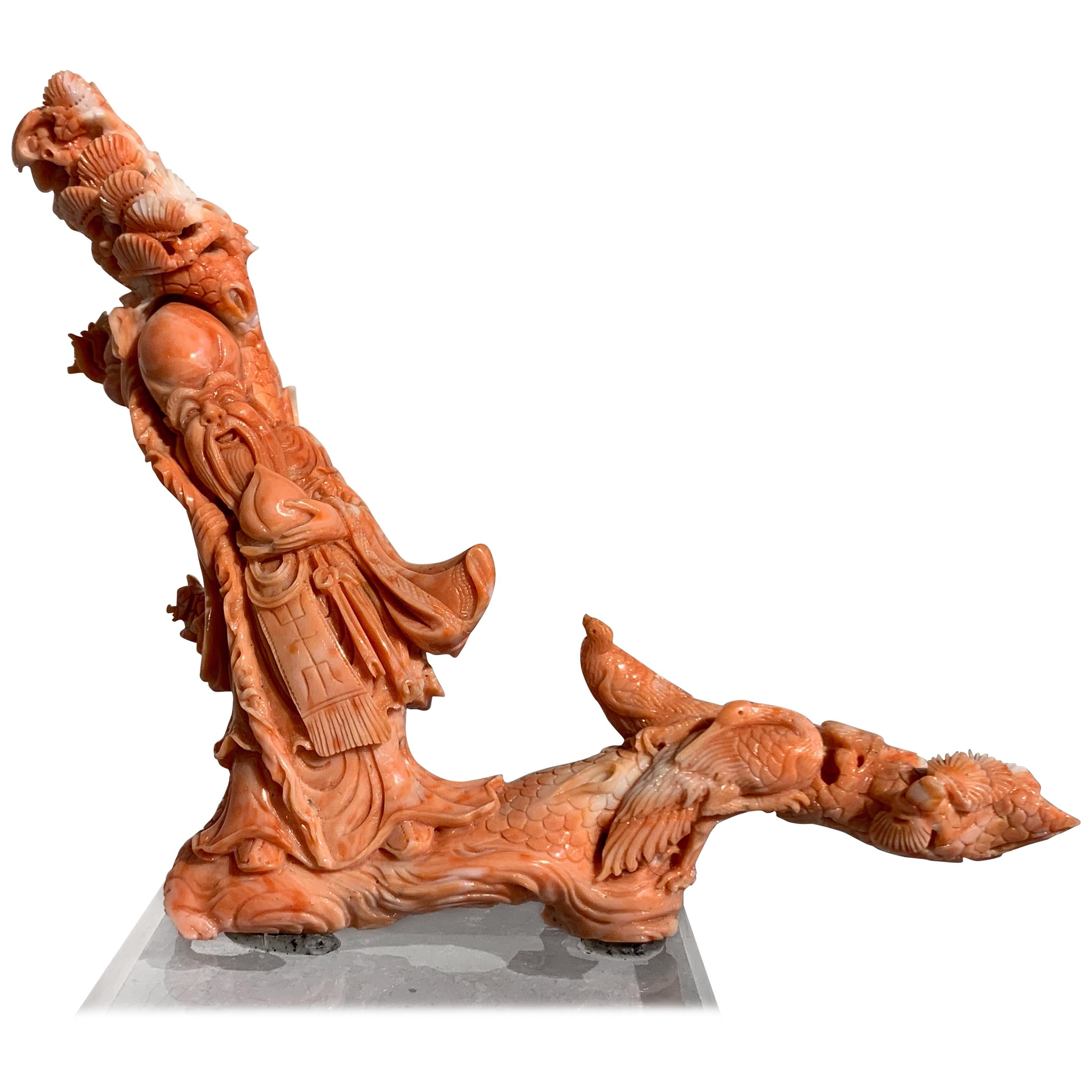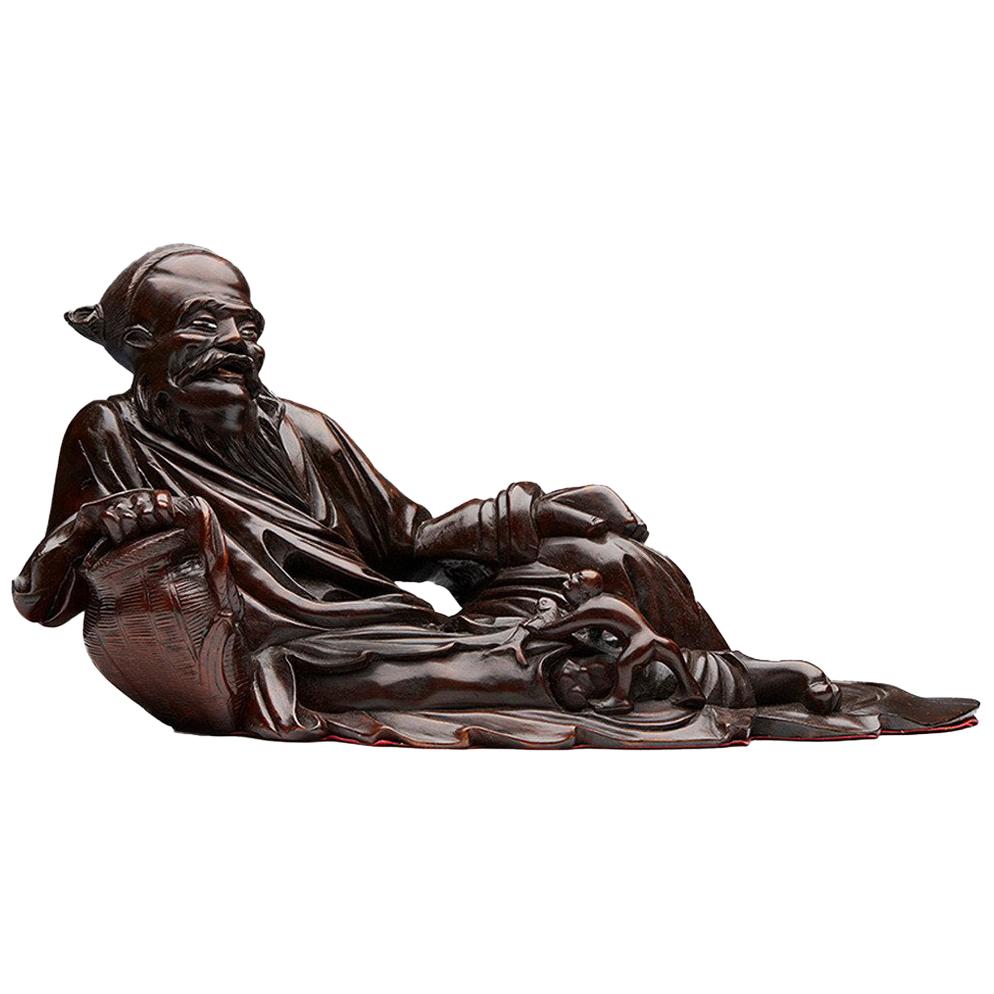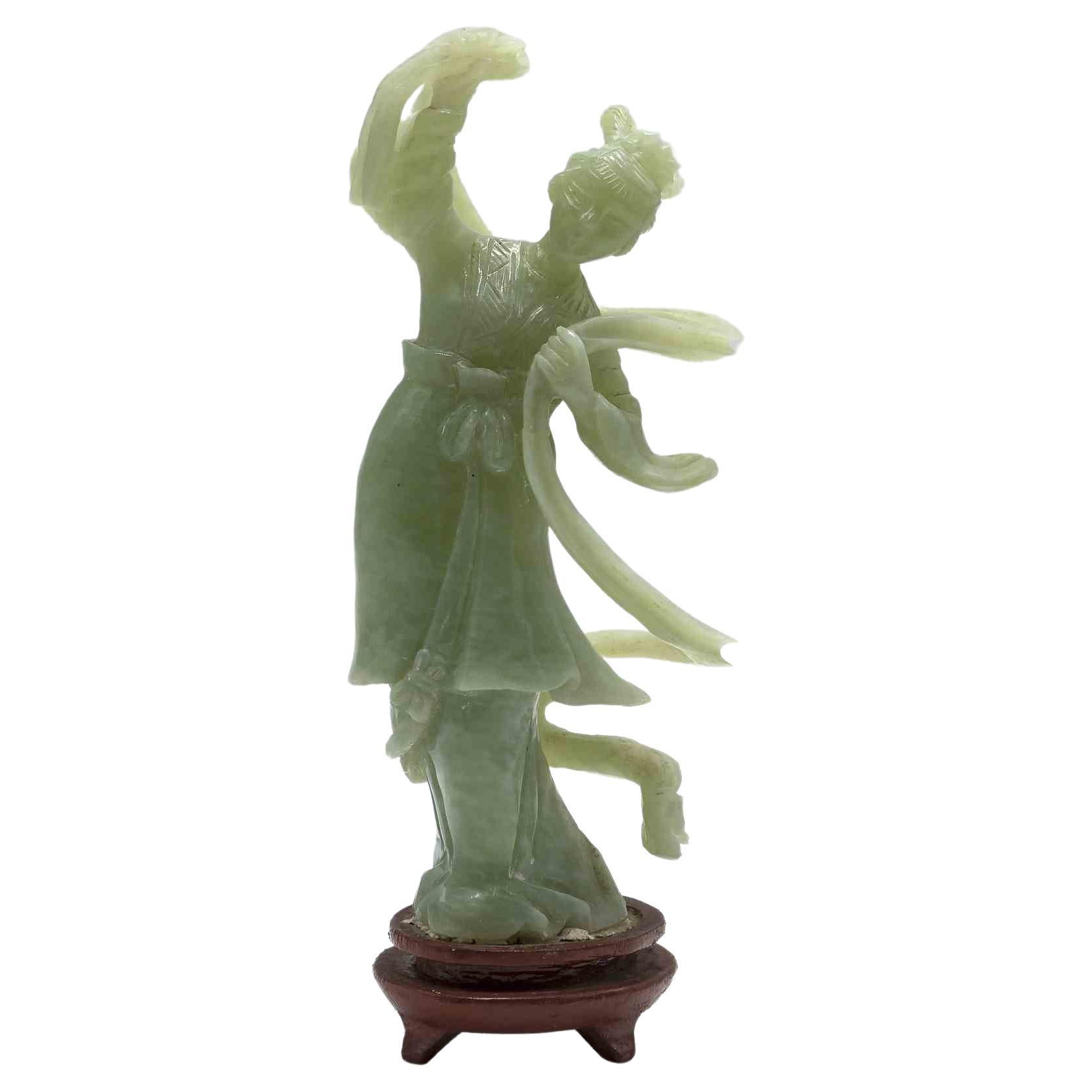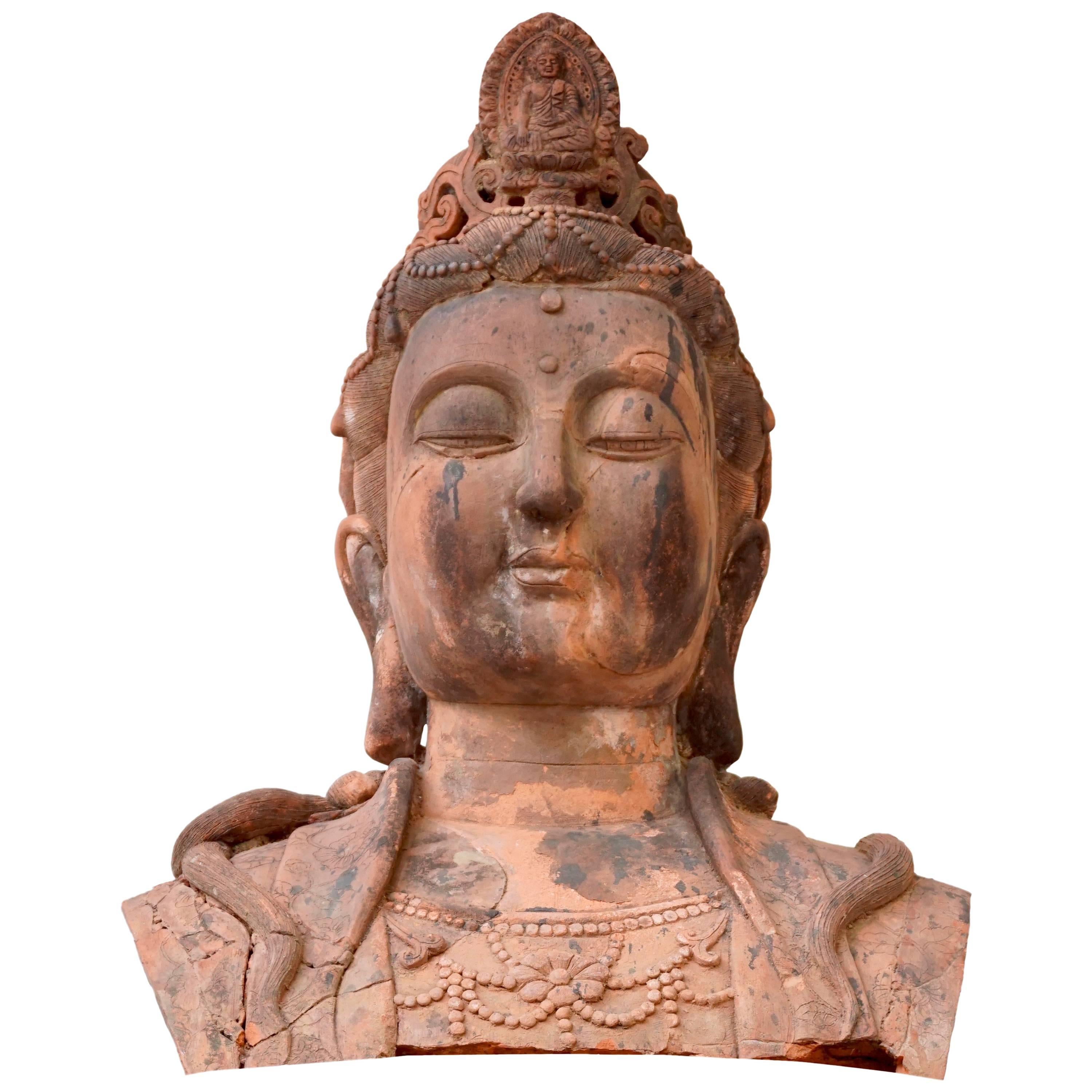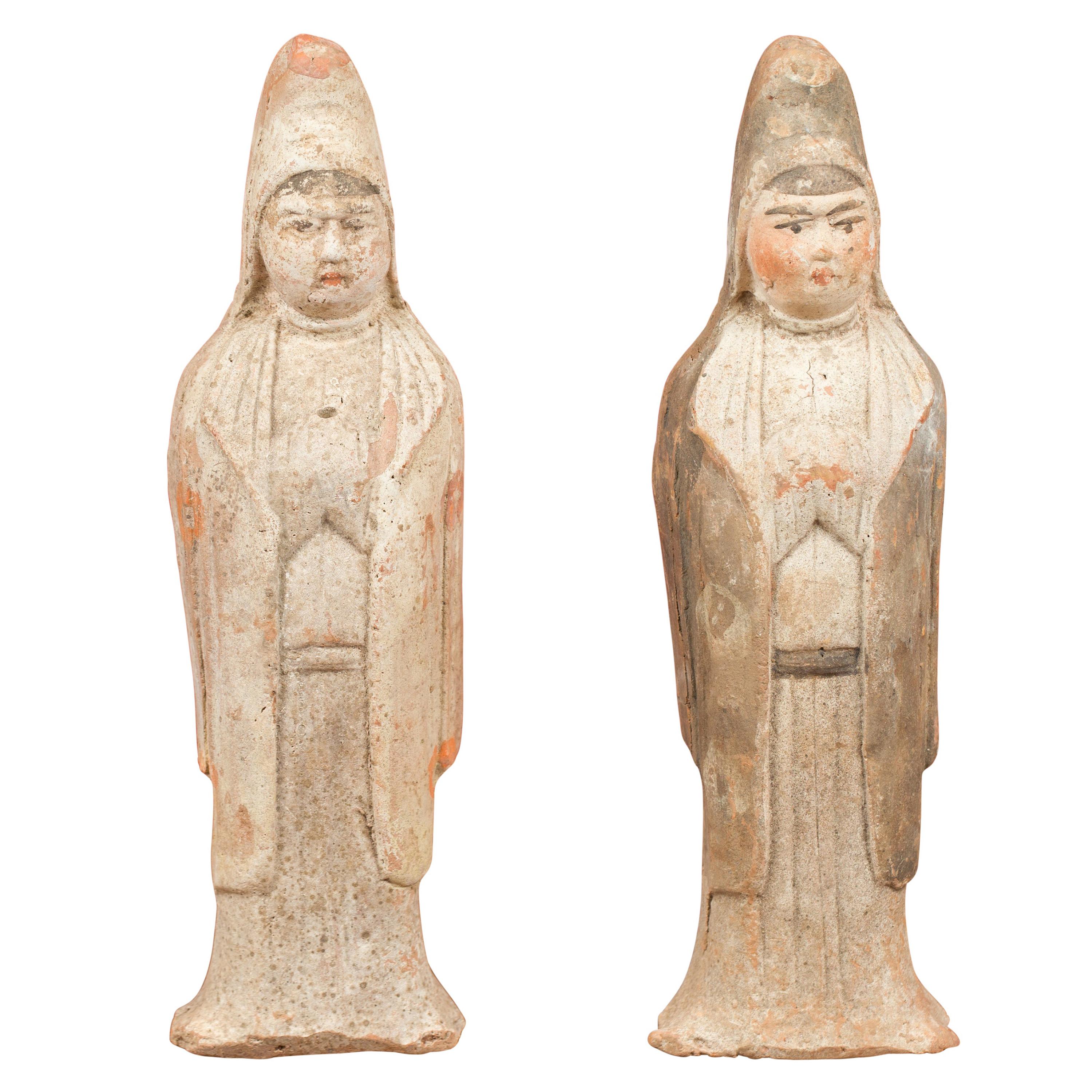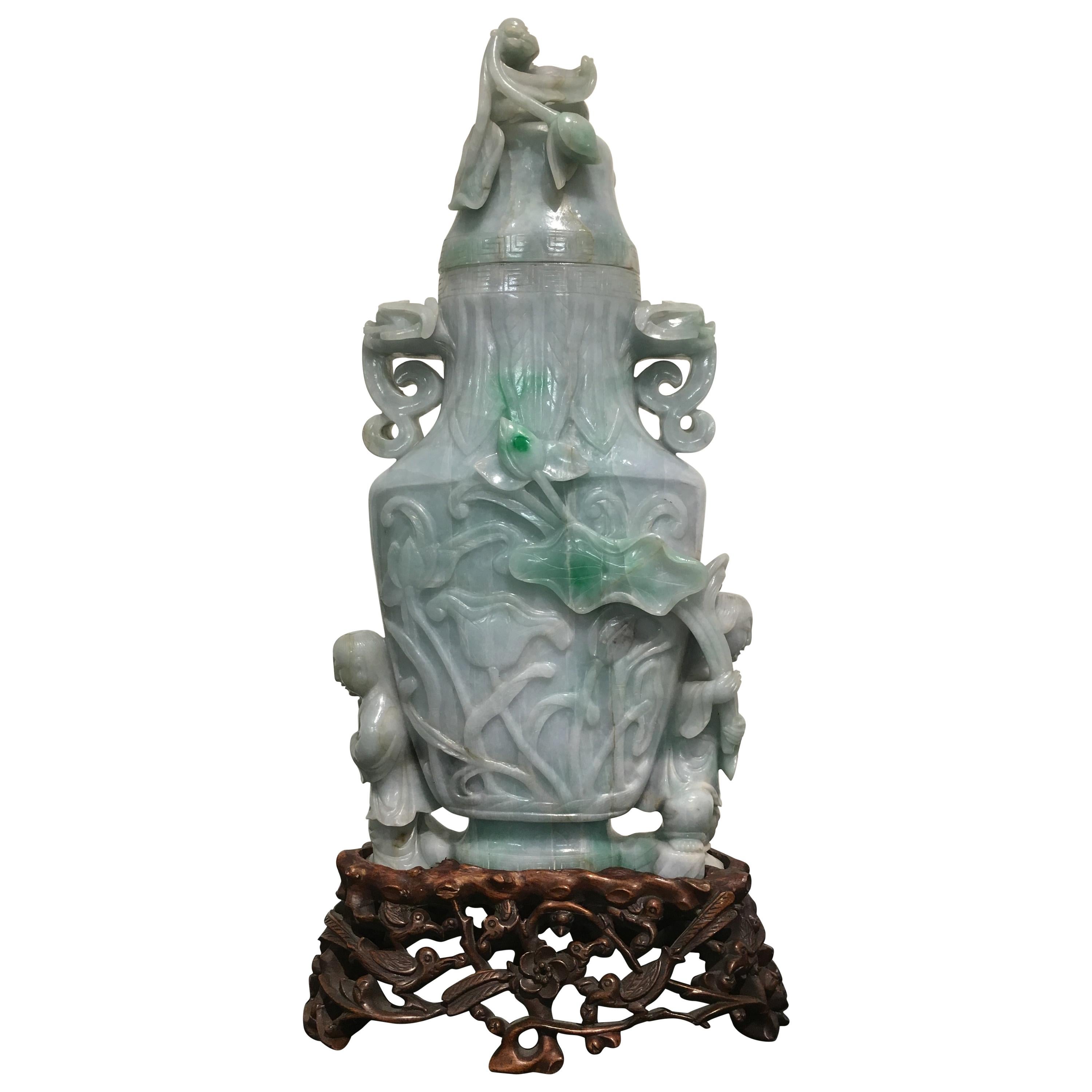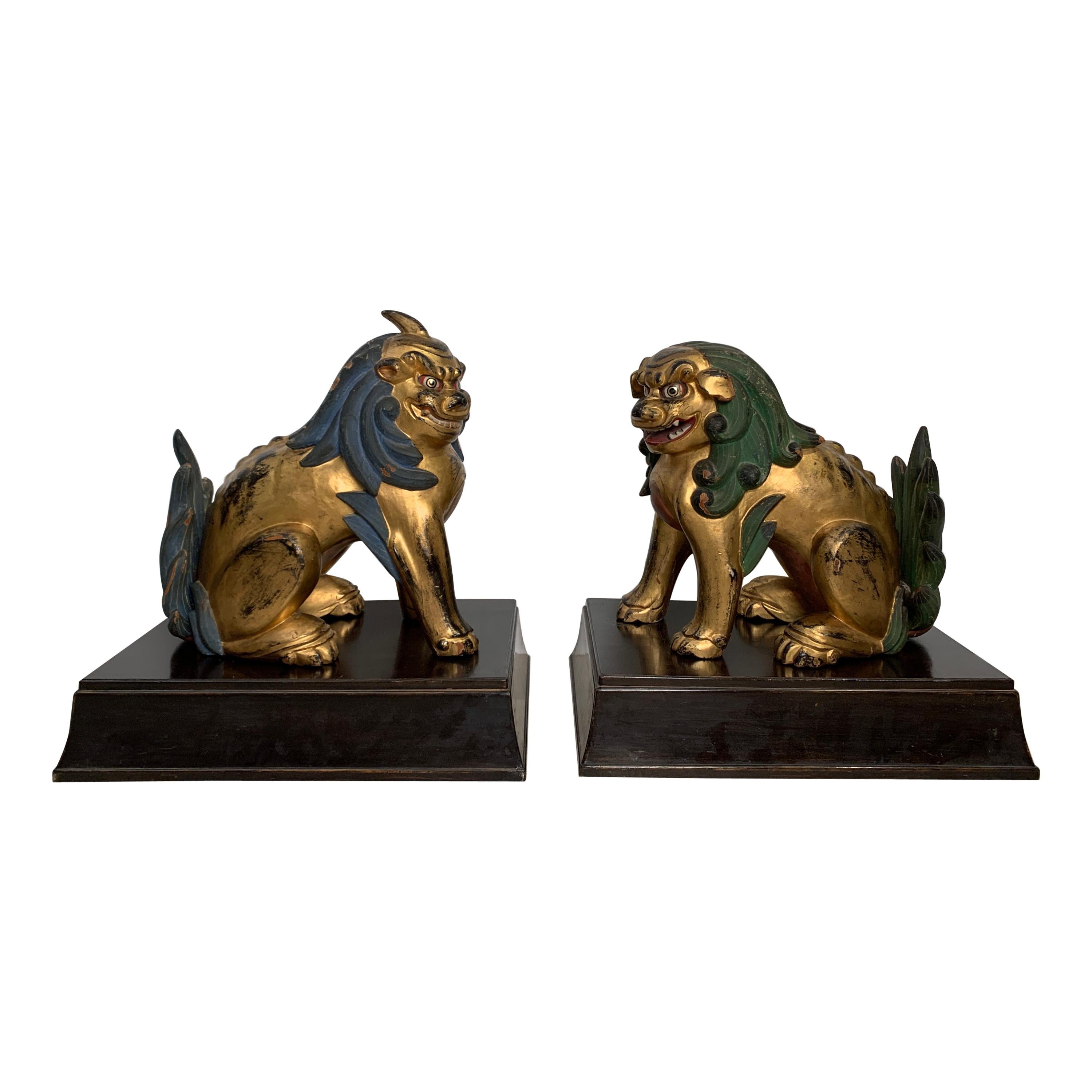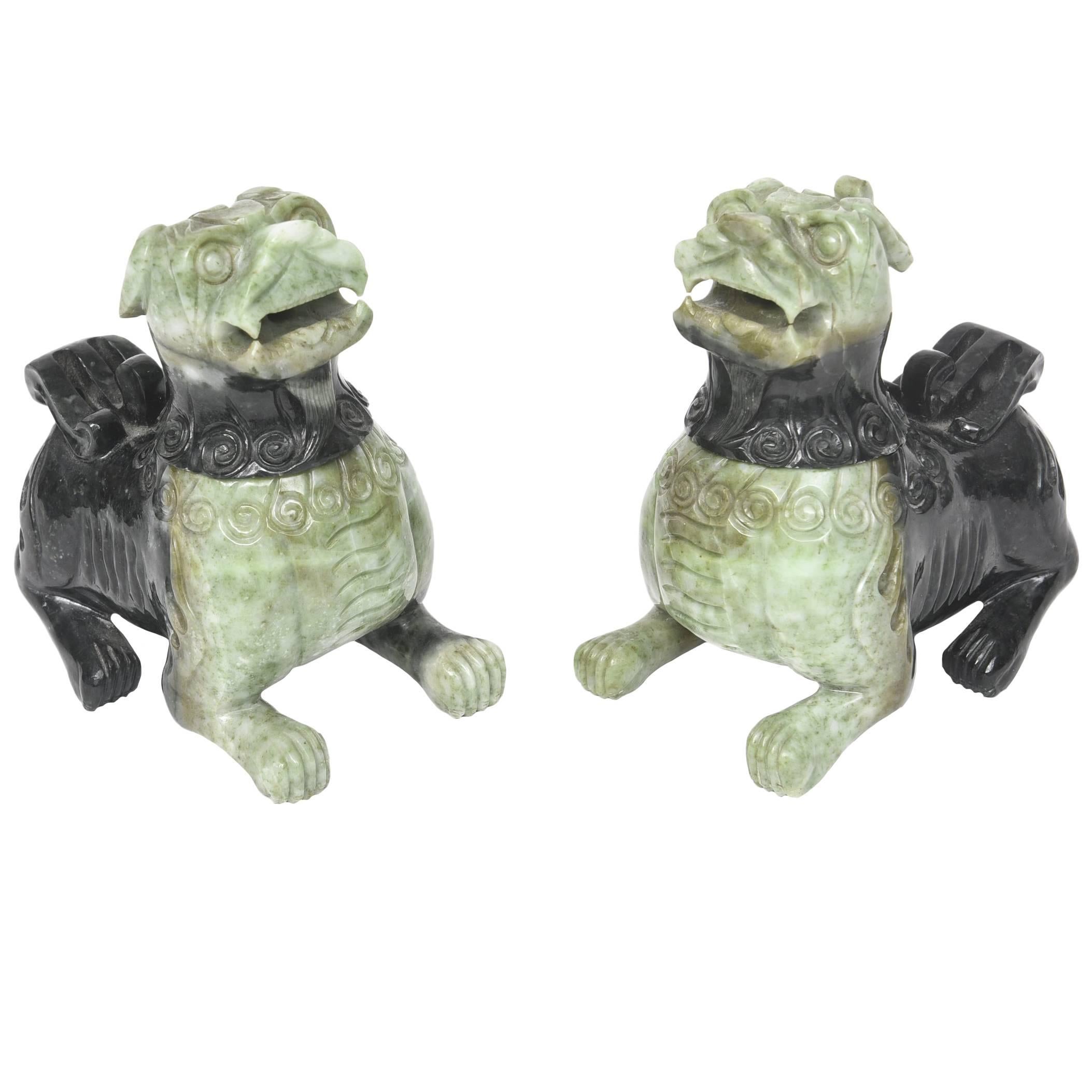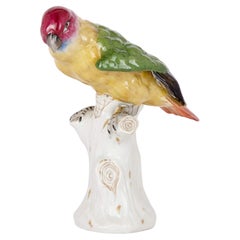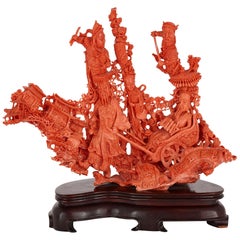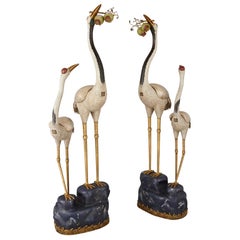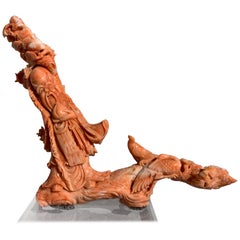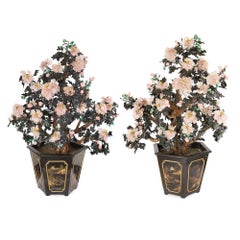
Very Large Pair of Early 20th Century Chinese Flower Models
View Similar Items
Want more images or videos?
Request additional images or videos from the seller
1 of 11
Very Large Pair of Early 20th Century Chinese Flower Models
About the Item
- Dimensions:Height: 84.65 in (215 cm)Width: 63 in (160 cm)Length: 84.65 in (215 cm)
- Sold As:Set of 2
- Style:Qing (Of the Period)
- Materials and Techniques:
- Place of Origin:
- Period:
- Date of Manufacture:Early 20th Century
- Condition:
- Seller Location:London, GB
- Reference Number:Seller: 152351stDibs: LU95638881503
About the Seller
5.0
Recognized Seller
These prestigious sellers are industry leaders and represent the highest echelon for item quality and design.
Established in 1975
1stDibs seller since 2012
363 sales on 1stDibs
Typical response time: 5 hours
Associations
The British Antique Dealers' AssociationInternational Confederation of Art and Antique Dealers' Associations
More From This SellerView All
- Volkstedt Porcelain Model of a Parrot, German, Early 20th CenturyBy Aelteste Volkstedter PorzellanmanufakturLocated in London, GBA Volkstedt porcelain model of a parrot German, early 20th century Measures: height 14cm, width 13cm, depth 6cm This bold, bright, and beautiful porcelain bird model of a parrot...Category
Early 20th Century German Animal Sculptures
MaterialsPorcelain
- Large Chinese Sculpted Coral Depicting a Dignitary and AttendantsLocated in London, GBLarge Chinese sculpted coral depicting a dignitary and attendants Chinese, early 20th Century Measures: Height 38cm, width 40cm, depth 20cm Taking beautiful natural red coral as...Category
Early 20th Century Chinese Sculptures and Carvings
MaterialsCoral
- Two Massive Late Qing Cloisonné Enamel Models of CranesLocated in London, GBTwo massive late Qing cloisonné enamel models of cranes Chinese, circa 1900 Measures: Height 187cm, width 52cm, depth 50cm These extraordinary Chin...Category
Antique Early 1900s Chinese Animal Sculptures
MaterialsEnamel
$229,940 / set - Qing Dynasty Antique Chinese Red Coral SpecimenLocated in London, GBThis red coral specimen, with flowing lines and organic form, is a beautiful example of how the work of nature can be, and has been, celebrated as a...Category
Early 20th Century Chinese Sculptures and Carvings
MaterialsCoral
- Two Meissen Porcelain Chinese Nodding Pagode FiguresBy Meissen PorcelainLocated in London, GBCalled ‘pagode’ (or pagoda) figures, these Meissen Porcelain models are based on the sculptures of deities found in pagoda temples in the Far East. Meissen began to produce these kinds of porcelain figures in the early 18th century, prompted by the demand for the Far Eastern ‘pagodes’ being imported into Europe at this time. The Meissen factory in Germany was founded in 1709 and was the first producer of true porcelain wares in Europe. The company’s main patron was Augustus II the Strong, the Elector of Saxony and King of Poland. Meissen was, and continues to be, famous for its tableware, vases, candelabra, animal sculptures and figures, like this pair, which were often graceful and light-hearted in character. These models feature the Meissen mark of the two blue crossed swords on their undersides. These porcelain models take the form of a Chinese couple...Category
Antique 19th Century German Chinoiserie Figurative Sculptures
MaterialsPorcelain
$28,103 / set - Pair of Large Meissen Porcelain Models of MagpiesBy Meissen PorcelainLocated in London, GBPair of large Meissen porcelain models of magpies German, Late 19th Century Measures: Height 53cm, width 14cm, depth 13cm These wonderful porcelain Animalia pieces were made by ...Category
Antique Late 19th Century German Animal Sculptures
MaterialsPorcelain
$15,329 / set
You May Also Like
- Chinese Carved Coral Figure of Shou Lao, Early 20th CenturyLocated in Austin, TXA wonderfully Chinese carved coral branch in the form of Shou Lao, also called Shouxing, the Chinese god of longevity, Republic period, early ...Category
Early 20th Century Chinese Qing Sculptures and Carvings
MaterialsCoral
- Antique Chinese Hardwood Reclining Immortal Figure, Early 20th CenturyLocated in Bishop's Stortford, HertfordshireAn antique lacquered hard wood figure of a reclining immortal. He is resting on a basket and with a miniature fisherman presenting him a large fish. The figures are disproportionate ...Category
Early 20th Century Chinese Qing Sculptures and Carvings
MaterialsHardwood
- Vintage Chinese Serpentine Sculpture, China, Early 20th CenturyLocated in Roma, ITVintage Chinese serpentine sculpture is a traditional decorative object realized in china in the early 20th century. Serpentine m...Category
Early 20th Century Japanese Figurative Sculptures
MaterialsMarble, Serpentine
- Larger Than Life Terracotta Buddha Bust of Guanyin, Early 20th Century, ChinaLocated in Antwerp, BEA massive larger than life terracotta buddha bust of Guan Yin, China, early 20th century. Broken and restored with wear and tear from enduring exposure to the elements. Size: 75 cm high. Weight: 40 kg. Guanyin, Kwanyin, Guanshiyin or Guanyin Pusa is the Chinese interpretation of the bodhisattva Avalokiteśvara (the goddess of comfort and mercy). In addition, she is seen in Taoism as an immortal. The scripture dedicated to her is Dabeizhou. Guanyin is the goddess of compassion and the sea. She is one of the three saints of the western paradise, along with Mahasthamaprapta and Amitabha Buddha; they are worshiped to save departed loved ones from hell and grant them entrance to the western paradise. Guanyin Chinese name Traditional Chinese 觀音 Simplified Chinese 观音 Transcriptions Full Chinese name Traditional Chinese 觀世音 Simplified Chinese 观世音 Literal meaning "[The One Who] Perceives the Sounds of the World" Transcriptions Second alternative Chinese name Traditional Chinese 觀自在 Simplified Chinese 观自在 Literal meaning "Lord who Gazes down on the World" Transcriptions Burmese name Burmese ကွမ်ယင် IPA [kwàɴ jɪ̀ɴ] Tibetan name Tibetan སྤྱན་རས་གཟིགས Vietnamese name Vietnamese alphabet Quan Âm (Quán Âm) Quán Thế Âm (Quan Thế Âm) Quán Tự Tại Chữ Hán 觀音 觀世音 觀自在 Thai name Thai กวนอิม, พระอวโลกิเตศวรโพธิสัตว์ RTGS Kuan Im, Phra Avalokitesuan Korean name Hangul 관음, 관세음, 관자재 Hanja 觀音, 觀世音, 觀自在 Transcriptions Mongolian name Mongolian script ᠨᠢᠳᠦ ᠪᠡᠷ ᠦᠵᠡᠭᠴᠢ Japanese name Kanji 観音, 観世音, 観自在 Hiragana かんのん, かんぜおん, かんじざい Transcriptions Indonesian name Indonesian Kwan Im, Kwan She Im, Awalokiteswara Filipino name Tagalog Guanyin (ᜄᜓᜀᜈᜌᜒᜈ) Sanskrit name Sanskrit अवलोकितेश्वर (Avalokiteśvara) Khmer name Khmer អវលោកិតេស្វរៈ (Avalokitesvarak), អវលោកេស្វរៈ (Avalokesvarak), លោកេស្វរៈ (Lokesvarak) Hmong name Hmong Kabyeeb, Niam-Txiv Kabyeeb, Dabpog, Niam-Txiv Dabpog Guanyin (traditional Chinese: 觀音; simplified Chinese: 观音; pinyin: Guānyīn) is a Bodhisattva associated with compassion. She is the East Asian representation of Avalokiteśvara (Sanskrit: अवलोकितेश्वर) and has been adopted by other Eastern religions, including Chinese folk religion.[note 1] She was first given the appellation "Goddess of Mercy" or "Mercy Goddess" by Jesuit missionaries in China.[1] Guanyin is short for Guanshiyin, which means "[The One Who] Perceives the Sounds of the World."[2] On the 19th day of the sixth lunar month, Guanyin's attainment of Buddhahood is celebrated.[3] Some Buddhists believe that when one of their adherents departs from this world, they are placed by Guanyin in the heart of a lotus, and then sent to the western pure land of Sukhāvatī.[4] Guanyin is often referred to as the "most widely beloved Buddhist Divinity"[5] with miraculous powers to assist all those who pray to her, as is mentioned in the Pumen chapter of Lotus Sutra and Kāraṇḍavyūha Sūtra. Several large temples in East Asia are dedicated to Guanyin, including Shaolin Monastery, Longxing Temple, Puning Temple, Nanhai Guanyin Temple, Dharma Drum Mountain, Kwan Im Thong Hood Cho Temple, Shitennō-ji, Sensō-ji, Kiyomizu-dera, Sanjūsangen-dō, and many others. Guanyin's abode and bodhimaṇḍa in India is recorded as being on Mount Potalaka. With the localization of the belief in Guanyin, each area adopted their own Potalaka. In Chinese Buddhism, Mount Putuo is considered the bodhimaṇḍa of Guanyin. Naksansa is considered to be the Potalaka of Guanyin in Korea. Japan's Potalaka is located at Fudarakusan-ji. Tibet's Potalaka is the Potala Palace. Vietnam's Potalaka is the Hương Temple. There are several pilgrimage centers for Guanyin in East Asia. Putuoshan is the main pilgrimage site in China. There is a 33 temple Guanyin pilgrimage in Korea which includes Naksansa. In Japan, there are several pilgrimages associated with Guanyin. The oldest one of them is the Saigoku Kannon Pilgrimage, a pilgrimage through 33 temples with Guanyin shrines. Guanyin is beloved by most Buddhist traditions in a nondenominational way and found in most Tibetan temples under the name Chenrézik (Wylie: Spyan ras gzigs). Guanyin is also beloved and worshipped in the temples in Nepal. The Hiranya Varna Mahavihar located in Patan is one example. Guanyin is also found in some influential Theravada temples such as Gangaramaya Temple, Kelaniya and Natha Devale nearby Temple of the Tooth...Category
Early 20th Century Chinese Chinese Export Sculptures and Carvings
MaterialsTerracotta
$3,957 Sale Price20% Off - Monumental Early 20th century Chinese Hardwood Sculpture of a BuffaloLocated in Troy, NYExceptionally large Chinese sculpture of a buffalo in laying down on a simulated carved root-wood base, with five children riding on its back....Category
20th Century Chinese Other Sculptures and Carvings
MaterialsHardwood
- Pair of Chinese Bronze Deity Figures, 20th CenturyLocated in Belmont, MAPair of Chinese bronze figures of deities standing on dragons. The two sculptures were made in the 20th century. They represent the Tao gods Lu Xing and Fu Xin...Category
Vintage 1980s Chinese Chinese Export Sculptures and Carvings
MaterialsBronze
$1,000 Sale Price / set47% Off
Recently Viewed
View AllMore Ways To Browse
Hardstone Flower
Oriental Carvings
Antique Rose Quartz
Large Plant Container
Chinese Hardstone
Hardstone Sculpture
Chinese Landscape Sculpture
Hardstone Carving
Oriental Wood Carvings
Chinese Rose Quartz
Chinese Hardstone Carving
Monumental Quartz
Chinese Quartz Pair
Antique Chinese Lanterns
Japanese Wood Temple
Asia Sculpture Vintage
Asian Sculpture Vintage
Japanese Stone Carving
